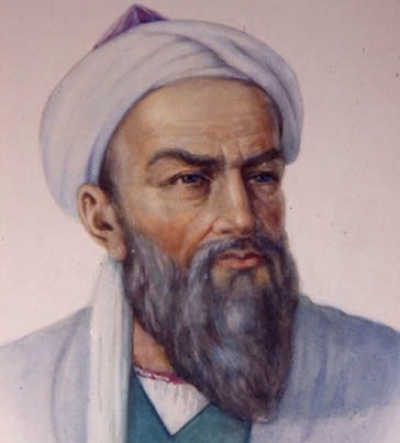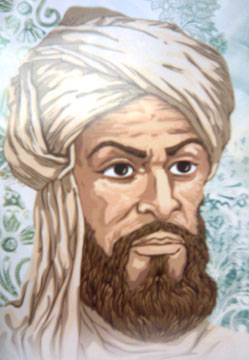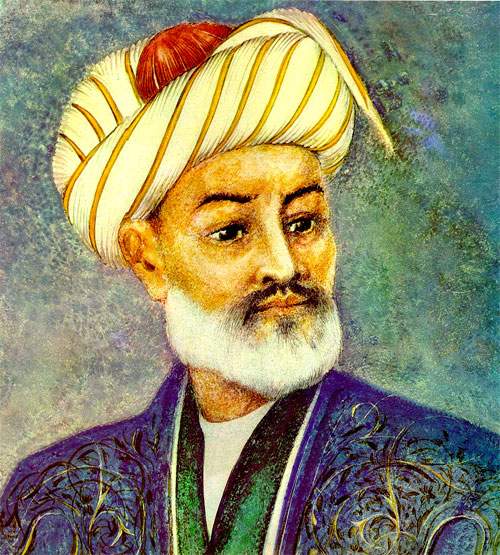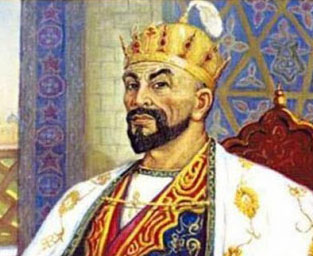People of Uzbekistan

People in Uzbekistan are known for their hospitality, friendly and peaceful nature. The people of Uzbekistan belong to diverse categories and ethnic races. The rich and varied history of Uzbekistan have made the customs and traditions of the Uzbek people more colorful.
The population of Uzbekistan comprises the ethnic groups of Uzbeks, Karakalpaks, Russians, Tajiks, Kazakhs, Tatars and many others. The people in Uzbekistan are famous throughout the world because of their amicable nature and courteous attitude. The Uzbeks are not only helpful towards their neighbors but also to the foreign travelers visiting their country.
The cultural and traditional heritage of the Uzbekistan people keep them united. “Shashmaqam” is the exquisite traditional music form of Uzbekistan that precisely states the affectionate nature of these music loving people. This music form fuses six different styles of songs. that has been derived from the various ethnic groups residing in Uzbekistan. Persian and Sufi music also has greatly influenced this form.
The people of Uzbekistan are fair with interesting facial features. The features vary with their origin. Some people have small eyes and sharp nose while some have flat features. Usually they are tall and stout people. The Uzbek people are very diet conscious and follow discipline in whatever they do. A casual meeting may also be honored through traditional customs like serving tea and raising toast. The Uzbek people greet people to their house at any hour of the day. It is customary to embrace or kiss on the cheek of their near and dear ones on meeting, after a long period of time. These people live a simple but an elegant lifestyle. Their professional fields are mainly family business or agricultural activities. The Uzbek people are very much family oriented people, who dedicate their every minute of leisure to their family members.
The Uzbekistan People love to live their life simple without any violence or corruption and welcome their guests from all over the world to a safe land for spending their vacations.
Great Personalities of Uzbekistan
Abu-Rayhon Beruniy
 Abu-Rayhon Beruniy– a remarkable scientist, amazing with variety of his scientific interests, boldness of idea, the author of more than 150 works devoted to actual issues of natural sciences, philosophy, history, philology, great encyclopaedist– the thinker, the humanist of the Middle Ages epoch.
Abu-Rayhon Beruniy– a remarkable scientist, amazing with variety of his scientific interests, boldness of idea, the author of more than 150 works devoted to actual issues of natural sciences, philosophy, history, philology, great encyclopaedist– the thinker, the humanist of the Middle Ages epoch.
Outlook of Abu-Rayhon Beruniy was formed at the end of X – the beginning of XI century in Central Asia. He was born on 2 Zu-ul-hidja in 362 (on September 4, 973 A.D.) in suburb of Kyat, former feudal capital of Khorezm. On the native land he has received good education and from a youth began his scientific activity. Due to political events in Khoresm Beruniy left the native land and approximately in between 998-1004 lived in Gurgan, at southeast coast of Caspian Sea. At this time he has done a great work – «Monuments of the past generations ».
In about 1005 Beruniy came back to Khorezm, where at a court yard of the Khorezm king Abu Abbas Mamun ibn Mamun (1009-1017) occupied honorable position. In 1017 Mahmud Gaznavi (998-1034) has subordinated to himself Khoresm, and in the same year Beruniy together with some other scientists had been compelled to follow the conqueror to Hansa where he stayed up to the end of his life. Despite the unfavorable conditions for him in the capital Mahmuda, Beruniy was entirely given to scientific researches. Together with the army of sultan, Beruniy had several times visited India. He has taken advantage of the trips for studying this country and as a result, by 4030 he had written an outstanding composition on India. Earlier, in 1025 Beruniy finished "Geodesy". To sultan Masud (1030-1041), the receiver Mahmud, Beruniy has devoted his main work on mathematics and astronomy – « Masudov kanon». At government of the subsequent sultan – Masud (1041 - 1048) – Beruni had written the big work on mineralogy, and at the end of a life – "Saydan".
He died in Gazna 2 Radjab 440. (on December 11, 1048).
Al-Khorezmi Muhammed Bin - Mussa (783 - 850)
 Nickname Al – Khorezmi specifies his native land – the Central Asian state Khoresm (nowadays territory of Uzbekistan), Bin Mussa – "son of Mussa", and one of nicknames of the scientist – Al – Madjusi– speaks about his origin from a sort of magicians (on – Arabic "madjus"). It shows also, that one of sources of knowledge of Mohammed Al – Хорезми was science prior to Islamic Central Asia the keepers of which were magicians. He managed in Baghdad the library of wisdom House of some sort of the Baghdad academy at caliphate of Al – Mamun. There were the arithmetic treatise « The Book about the Indian account », the algebraic treatise « The Brief book about calculation of algebra and almukabal», astronomical tables and a geographical path. Both mathematical treatises have been translated into Latin language of medieval Europe and served for a long time as the basic textbooks on mathematics. Nickname Al-Khorezmi in the modified form has turned to a nominal word "algorithm" and all over again meant all system of decimal item arithmetics. Subsequently this term has received a wider sense in mathematics as a rule performing operations in certain order.
Nickname Al – Khorezmi specifies his native land – the Central Asian state Khoresm (nowadays territory of Uzbekistan), Bin Mussa – "son of Mussa", and one of nicknames of the scientist – Al – Madjusi– speaks about his origin from a sort of magicians (on – Arabic "madjus"). It shows also, that one of sources of knowledge of Mohammed Al – Хорезми was science prior to Islamic Central Asia the keepers of which were magicians. He managed in Baghdad the library of wisdom House of some sort of the Baghdad academy at caliphate of Al – Mamun. There were the arithmetic treatise « The Book about the Indian account », the algebraic treatise « The Brief book about calculation of algebra and almukabal», astronomical tables and a geographical path. Both mathematical treatises have been translated into Latin language of medieval Europe and served for a long time as the basic textbooks on mathematics. Nickname Al-Khorezmi in the modified form has turned to a nominal word "algorithm" and all over again meant all system of decimal item arithmetics. Subsequently this term has received a wider sense in mathematics as a rule performing operations in certain order.
Thus, actions « Al - Djebr» and "Al-Mukabala" have replaced with themselves transfer of nowadays-used equation members from one part of the equation into another and reduction of similar members. These two operations have allowed Al – Khorezmi to transfer any algebraic equation of the first and second degree into initial forms which Al – Khorezmi has six. Unlike Greeks who, certainly, also solved quadratic equations, but solved in geometrical way, Al – Khorezmi used drawings only for explanation of the rhetorical decision validity. He could solve any quadratic equation by his general rule (finding positive roots). If Greeks had geometrical solutions the method Al – Khorezmi was almost algebraic. This is an enormous step forward in comparison with geometrical algebra of Greeks. In the arithmetic treatise Al – Khorezmi basically followed the Indian samples, and from him the Europeans have got familiar with the Indian methods of recording the numbers, that is the use of zero and location of figures values. The algebraic path differed from both works, that of Indian mathematicians, and Greeks. It can be believed, that in this book Al – Khorezmi followed local traditions and own results. If the majority of Greeks did not see necessity to apply the scientific knowledge to practical needs, the main desire of Al – Khorezmi was to place a science to serve to humankind and to adapt it for the practical purposes. In Algebra Al – Khorezmi has a section about trade and commercial transactions, with problems on a threefold Rule.
Thus, for the first time in a history of mathematics in the treatise of Al – Хорезми have appeared the general rules of solving the quadratic equations.
Alisher Navoiy

Alisher Navoi was born on February 9, 1441 in the city of Herat, the capital of Huroson State.
From the childhood Alisher was interested in reading the works of classics of Persian-Tadjik literature: Saadi, Attar and others. According to Navoiy himself, such poets as Lutfi Sheikh Kemal Turbati have directed, assessed the verses written by him. Navoiy studied at the most educated people of that time, took part in their highly intellectual and deeply instructive conversations. Having no family, no children, no successors, the poet spent a significant part of his huge wealth for charity. He has constructed a lot of educational institutions, hospitals, a caravan–sheds, channels, bridges and roads. In Herat Navoiy maintained the closest relations with the great Tadjik poet and thinker Abdurrahman Dzhami (1414 - 1492) who was his closest friend, the adherent, the teacher and the spiritual instructor. Friendship of Navoiy and Dzhami remain in a history for ever as a bright symbol of friendship between Uzbeks and Tadjiks.
By the time when Navoiy became one of the outstanding persons in Hurasan, having received a honorable post at a court yard, he already had reputation of the masterly master of a verse. The generosity of his talent was that the poet has captured all versions of lyrical works created by peoples of the Muslim East during many centuries. Gazals and kitas, tarjibans and rubai– in what genre would not act Навои, he proved everywhere with shine boundless opportunities of his talent and skill. Many known representatives of the literature, art and science of second half 15 – the beginning of 16 century, as a token of deep respect for Alisher Navoi and in gratitude for his support, devoted to him their works.
The image of this versatile and talented person historically is not separable from the broad audience of his contemporaries, friends, admirers and direct pupils – poets and musicians, scientists and architects, calligraphers and artists, historians and the writers, who defined their activity as cultural blossoming of Herat « epoch of Nabvoiy ».
Navoiy died On January 3, 1501 in Herat. All Herat saw off to last way its favorite poet and the wise figure. The mourning concerning Alisher Navoi's death lasted during the whole year - so great was the love to the person who has devoted all talent and skills to the people who had been indefinitely loved by him.
Alisher Navoi's literary heritage is very huge. In it we find the set of fine poems, epic products, scientifically – philosophical pathes, literary researches, biographies of scientists, poets, philosophers, works on a history, on linguistics.
On the top of poetic creativity of Navoi is creation of "Hamsa" – a cycle from five poems: « Confusion just », « Layli and Madjnun», « Farhad and Shirin», « About seven wanderers », « Wall of Iskandar».
The spiritual heritage of the remarkable son of Uzbeks presently gets to be known internationally, it becomes the property of everyone, to whom the interests of the world, friendship and nations unity is valuable.
Ismail-(Imam) Al-Bukhari
Al – Bukhari, Muhammad Ismail Abu Abdullah al – Djufi (810 - 870) – well-known Sunni muhaddist – traditionalist. He was born in the family of Iranian origin in Bukhara, has died in the Hartanka settlement (near Samarkand). Having started studying hadis at the age of 10 years, Al–Bukhari has shown uncommon abilities and unusual memory. During many years h) traveled, comprehending a science about hadises on different provinces of Khaliftae (Hijaz, Egypt, Iraq, Khurasan). According to sources, he listened хадисы more, than at thousand sheikhs. Аль – Бухари has aimed to collect all "authentic" (sahih) legends about statements and acts of Muhammed. Having shown peculiar to muhaddises of that time his critical attitude, Al–Bukhari has checked up 600 thousand hadises which were in use at that times, and 200 thousand more which he has written down from the teachers and informants. From this enormous amount of legends Al – Bukhari has selected by quality of "faultless" only about 7400 hadises. He has made the arch of them Al – Djami as– sahih which is usually named briefly as as– Sahih.
As– Sahih of Al–Bukhai had already been recognized by contemporaries as an outstanding manual on fikh and by the 10th century has occupied despite criticism of some particulars, alongside with the As– Sahih of Muslim the first place among assemblies of sunni traditions. For the majority of sunnits the As– Sahih of Al–Bukhari became the second book after the Koran.
Al Bukhari is also known as the composer of the authoritative arch of biographies of khadis transmitters – At – Trih al - kabir, created by him in several editions. Among his other compositions it is necessary to name still poorly studied interpretation on the Koran – Tafsir al–Kuran.
In Samarkand has finished his life the great seminary student of East Imam Al-Bukhari. He is the thinker of Middle Ages, has written about 400 thousand hadises – interpretation of positions of the Koran, has made a big contribution to theology. Now all Muslim world lives on his hadisas while on his native land al-Bukhari has been given to a precept. The name has emerged only when the well-known Lebanese writer in 1958, having visited the USSR, has told, that wants to visit the tomb of the well-known seminary student. His request has caused an alarm at party players. The inquiry has been made to the Central Committee of Communist Party of Uzbekistan, therefrom – to the Academy of sciences. Both in the afternoon and at night they searched for tomb of Al Bukhari, yet having found out near Samarkand, near not perceptible village.
Now the Imam Al-Bukhari complex is the magnificent construction constructed on modern technologies, keping all east architecture. It is 30 kilometers from Samarkand, but it is easy to reach it, for there are a lot of indexes, and the road is in good condition. In a complex, which occupies a huge territory (including external – with a fountain, additional constructions, park) are located the mosque, a tomb of the seminary student (it is processed from a jewel – onyx which bought from Iran), there is a hotel for tourists and pilgrims, shops where it is possible to get religious subjects and the literature.
Amir Temur (Tamerlane)
 Amir Temur was born in 8th April 1336 in Hodja Ilgor village (Yakkabag) near Kesh (Shahrisabz). His father emir Muhammad Taragaj was from notable family of a Turkic sort barlas. He was the influential person and had the big authority in Movarounnahr. His ancestors took a worthy place in the ranks of Chigatay ulus palace elite and made up their family tree from legendary turkis marshal Alan – Kuva, and their possessions were around Kesh and Nefes. Temur’s father emir Taragay constantly participated in kurultyas of chugatay beks, convened by the ulus khan on coast of the river Il. In 1355 he marries the daughter of emir Dzhaku – of Turmush aga barlas. The Supreme emir of Mivarounnahr Kazagan, having convinced of advantages of Amir Temur., in the same year has given him his grand daughter Uldzhaj Turkan aga as wife. Due to this marriage there was a union of Amir Temur with emir Husajnom, grandson of Kazagana. They together opposed Mongols. In 1356 A. Temur had two sons – Djahangri and Omar Shajh. The economic situation in Movarounnahr at the end of 13th – first half of 14th century worsened from day to day. Khan of Mongolia Togluk Temur who without resistance in 1360 has reached up to Kashkadarya has taken advantage of it. Amir Temur has arrived to him for service. But when Togluk Temur has appointed as the governor of Movarounnahr his son Iljas Hodzha, Amir Temur has not wished to serve this prince and having agreed with governor Balh emir Husejnom Amir Temur has entered persistent struggle against Mongols. At that time Samarkand was dominated by sarbadors – "hunged men", who were also struggling against Mongols. The name of this national movement has arisen from slogans of its participants «Struggle for freedom, or a head on the gallows». In 1370 Amir Temur on kurultay in Balh has been proclaimed by the Supreme as emir of Turan.
Amir Temur was born in 8th April 1336 in Hodja Ilgor village (Yakkabag) near Kesh (Shahrisabz). His father emir Muhammad Taragaj was from notable family of a Turkic sort barlas. He was the influential person and had the big authority in Movarounnahr. His ancestors took a worthy place in the ranks of Chigatay ulus palace elite and made up their family tree from legendary turkis marshal Alan – Kuva, and their possessions were around Kesh and Nefes. Temur’s father emir Taragay constantly participated in kurultyas of chugatay beks, convened by the ulus khan on coast of the river Il. In 1355 he marries the daughter of emir Dzhaku – of Turmush aga barlas. The Supreme emir of Mivarounnahr Kazagan, having convinced of advantages of Amir Temur., in the same year has given him his grand daughter Uldzhaj Turkan aga as wife. Due to this marriage there was a union of Amir Temur with emir Husajnom, grandson of Kazagana. They together opposed Mongols. In 1356 A. Temur had two sons – Djahangri and Omar Shajh. The economic situation in Movarounnahr at the end of 13th – first half of 14th century worsened from day to day. Khan of Mongolia Togluk Temur who without resistance in 1360 has reached up to Kashkadarya has taken advantage of it. Amir Temur has arrived to him for service. But when Togluk Temur has appointed as the governor of Movarounnahr his son Iljas Hodzha, Amir Temur has not wished to serve this prince and having agreed with governor Balh emir Husejnom Amir Temur has entered persistent struggle against Mongols. At that time Samarkand was dominated by sarbadors – "hunged men", who were also struggling against Mongols. The name of this national movement has arisen from slogans of its participants «Struggle for freedom, or a head on the gallows». In 1370 Amir Temur on kurultay in Balh has been proclaimed by the Supreme as emir of Turan.
And the marriage with daughter of Chingizs Saray Mulk Hanum allowed Amir Temur to add to his name a honorable title "kuragan", i.e. « the son-in-law of khan ». The primary objective of Amir Temur became overcoming dissociation and association of separate possession into a uniform state. As a Capital of this state he has chosen Samarkand where has urgently started erection of city defensive walls, citadels and a palace. He has put in pawn a new Samarkand, near to ruins of ancient capital of Sogdiana (modern Afrasiab).
Having united and subordinated the lands between Amu Darya and Syr-Darya, and also Fergana and Shash viloyat, Amir Temur began aggressive campaigns. For 35 years had lasted board of A.Temur (1370 - 1405) in Central Asia. He has created enormous empire from Indus and Ganges up to Syr-Darya and Zarafshan, from Tien-Shan up to Bosporus, he had lead the most part of his life in campaigns. During the campaign to China, in 1405 Amir Temur died in Ortrar. During the life time of Amir Temur a special composition about the government known under the name «Temur Code» has been written. It is a valuable historical source of the Middle Ages, consisting of two parts. In it there is a biography of Temur and the events connected to his life, sights of this outstanding statesman and the commander on military art, the methods and management of the country are stated. It is the valuable code of laws from which it is visible on the basis of what Amir Temur has created the centralized, controlled mighty state.
Having created huge power, Amir Temur prepared conditions for economic and cultural development of the country. Century traditions of the last epoch revive in a new historical context. As Movarounnahr becomes the center of trade, economy and culture of Near and Middle East. Such ancient cities as Samarkand, Kesh, Bukhara, Termez, Tashkent, Merv, etc., which were destroyed by hordes of Chingizhan began to equip with modern conveniences. Majestic buildings of mosques, madrasah , the mausoleums, a caravan – sheds and bath houses were under construction. Became usual, that each victory or event were immortalized in architecture. In building activity Amir Temur pursued a certain political aim– the constructions erected by him were to show force, power and greatness of his empire. During years of his board Amir Temur has put an end to feudal dissociation, has established trading - diplomatic relations with the largest kingdoms of Europe – France, England, Castile. Unfortunately, after death of Amir Temur trading - diplomatic relations with the Western Europe, incorporated by him have no further developed. The history puts Amir Temur in same line with such greatest commanders, as Alexander the Great, Dari 1, Yuriy Caesar.








 +99890 979 38 98
+99890 979 38 98 +99871 252 52 32
+99871 252 52 32 +99871 252 61 84
+99871 252 61 84



























